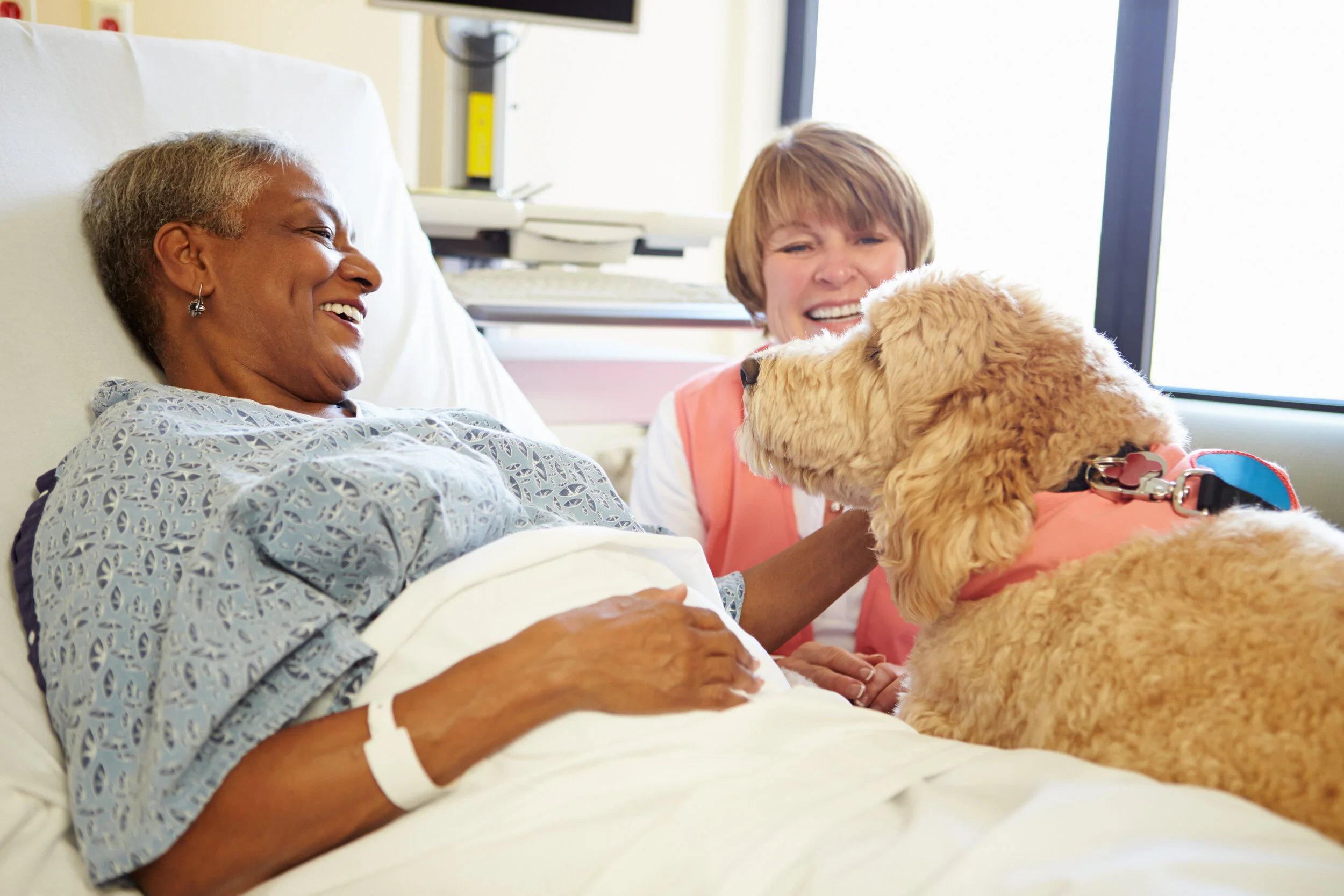Cancer Patients And Pets- Benefits And Risks Of Pet Ownership While Battling Cancer
Cancer Patients And Pets- Benefits And Risks Of Pet Ownership While Battling Cancer
Taking Care Of Pets While Undergoing Cancer Treatment
For many cancer patients, the comfort and love offered by their pets as they navigate treatment, recovery, and survivorship can be invaluable. Yet the physical and financial strains of treatment can exacerbate the challenges of providing adequate care for a pet.
Dogs are colloquially known as “man’s best friends.” They are trusty companions, always happy to see us, follow our every word, and will never abandon us. Simply put, they love their humans unconditionally and are not hesitant to show that love. Research now shows there are also health-related benefits to spending time with these furry friends.
Pets can be a wonderful source of comfort and companionship during cancer treatment. In fact, studies have shown that pet therapy can often have huge benefits during chemotherapy. Having a pet by your side can decrease feelings of loneliness, promote a sense of well-being, and even reduce the need for pain medications.
The Downside Of Pet Ownership From The Perspective Of Cancer Patients
But, caring for certain pets might increase your risk of getting an infection. Not all pets pose the same risks, and not all cancer treatments do, either. If you have pets, tell your cancer care team about them and your routines for caring for them. You can find out what might not be safe during cancer treatment. It’s also a good idea to visit your pet’s veterinarian to find out what kinds of illness might be passed from your pet during times when your immune system is weak.
It's best to avoid some types of pets while you're getting cancer treatment. There’s also a big difference between taking in a sick stray and keeping your healthy pet during cancer treatment. Strays often carry more germs and might not be up to date on vaccines.
Pets that live inside the home and are well-cared for are much less likely to cause problems if precautions are used. Still, pets can sometimes pick up germs that don't make them sick, but if a person with a weak immune system gets some of these germs, they can become ill.
Basic Guidelines For Safe Pet-Keeping For Cancer Patients
Some cancer treatments can weaken a patient’s immune system, so they may need to take special care. Being around animals, including pets, can increase the risk of infections. While going through cancer treatment, it’s good to follow some basic guidelines:
If you live with family or a roommate, ask someone else to clean up after pets such as cleaning the litter box or changing dog pads. If you need to clean up after a pet, wear gloves and wash your hands well after the cleanup. If you are cleaning a litter box, wear a mask to avoid inhaling the litter dust. Keep the litter box away from the kitchen and dining room.
If your pet is sick, take it to the vet right away. Your pet may have an infection that could be passed on to you if your immune system is weak. You also want to make sure your pet receives the care it needs!
Avoid scratches. Keep your dog’s or cat’s nails trimmed to minimize the risk of scratches. If you do get scratched, clean it well and keep it covered with a bandage. If it becomes red, warm, swollen, or oozes pus, call your healthcare team as soon as possible.
Keep your pets up-to-date on vaccines, heartworm prevention, and flea and tick medications to minimize your exposure to infection.
Do not adopt new pets or take in strays during cancer treatment. Strays are more likely to carry germs and not be up-to-date on vaccines, even if the animal appears healthy.
Some pets and animals do need to be avoided during cancer treatment when your immune system is weakened. Reptiles, chickens, ducks, and rodents can carry salmonella and other germs that may cause infection.
Find a good pet sitter! If you have to spend time at the hospital for surgery or treatment, make sure you have a reliable pet sitter.
Therapy Dogs- What Are They And How Can They Help In Recovery
They're specially trained animals who visit patients in the hospital to help them feel better.
Most of these dogs live at home with their owners and make routine visits to cancer facilities. The visits usually last less than two hours, and the animals typically stay with each person for about 15 or 20 minutes. Dogs can go to rooms, treatment areas like chemotherapy suites, and lounges or group areas.
A visit can involve hugging, petting, or talking to the dog. Some people read to the pup, play with it, or even walk it.
Therapy dogs come in all shapes, sizes, and breeds. But certain dogs match up better with specific people. For example, an active child may do better with an active dog who likes to play and can fetch a ball. If you're not feeling well or are in pain, a calm dog who can lie on the bed with you may be a better-suited choice.

